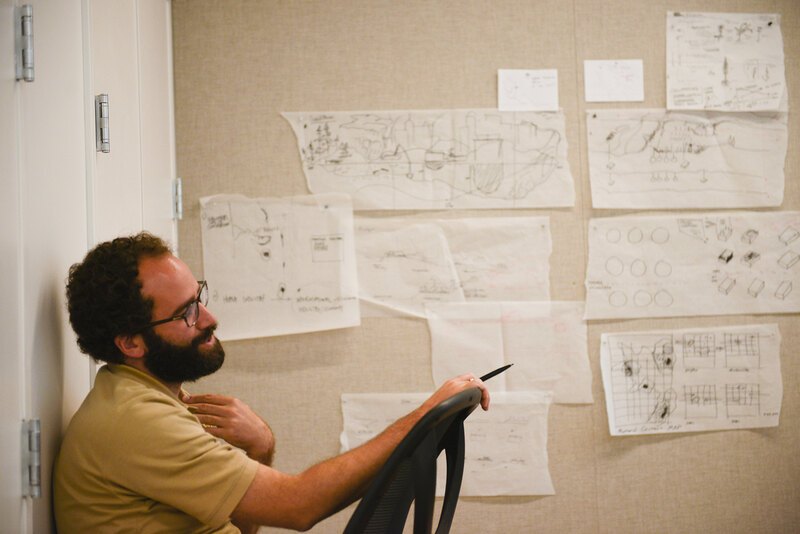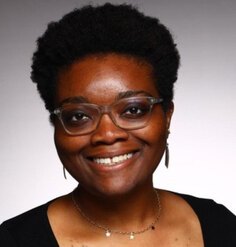Perspectives: Isaac Hametz

January 17, 2019
Isaac Hametz is principal and research director at Mahan Rykiel Associates. Isaac came to landscape architecture through urban agriculture and design activism, issues that remain connected to his work today. Through his work, Isaac explores the intersection of ecology, equity, and economic development.
What drew you to landscape architecture?
In 2006, after studying agriculture and working on a diversified organic vegetable farm in Maryland, I moved to Israel and established a small non-profit organization, Earth’s Promise. Our mission, to support local self-reliance through urban agriculture and grassroots organizing was fueled by the idealism and writing of A.D. Gordon, Wendell Berry, Gene Logsdon, and Aldo Leopold. It’s hard to imagine now, but at the time, urban agriculture was relatively unknown in Israel and funders and government agencies had trouble understanding both the social principles and spatial implications of the proposition. Enter landscape architecture.
Through mutual friends, I was introduced to a local landscape architect, Yael Rosenberg, who volunteered her time to help me develop what I would now call a landscape framework for Earth’s Promise’s operations. In the context of our collaboration, we discovered that Be’er Sheva, the city I was living and working in, was designed in the Garden City tradition of Ebenezer Howard and Leberecht Migge. This discovery blew my mind. Not only was there a school of thought dedicated to organizing cities around productive landscapes, but the city I was living and working in was also one of them.
The serendipity of this drove me to explore landscape architecture and I quickly found myself immersed and inspired by a new way of thinking about agriculture and the city. By the fall of 2010, after building the largest production-scale urban farm in Israel and supporting the creation of half-dozen community gardens, I hired an executive director to run Earth’s Promise and enrolled in the Masters of Landscape Architecture program at the University of Virginia. Over the next 3 years, Elizabeth K. Meyer, Kristina Hill, Julie Bargmann, Julian Raxworthy, Teresa Gali-Izard, and others helped me hone my voice as a professional and deepen my understanding of landscape architecture. I am grateful to them and to my classmates for the conversations, seminars, and studios that have and continue to shape my view of practice and the role of landscape architecture in the world today.
What is driving you professionally right now?
Professionally my work at Mahan Rykiel is driven by many of the core values that motivated me to create Earth’s Promise in 2006 (e.g. local self-reliance, community power, etc.). However, I express these values now through the prism of professional landscape practice. This demands balancing client/partner relationships and project constraints with an intentional emphasis on design to support social justice, ecosystem service, and economic development issues. Admittedly, not every project provides the opportunity to fully realize these values, but I believe the pursuit precipitates a productive tension that supports creativity and invention in our firm’s work.
An example of this is Mahan Rykiel’s collaborative Design with Dredge program, which weaves together questions about materials, methods, and modes of practice to develop resilient landscape infrastructure in the Chesapeake Bay. Brian Davis, associate professor at Cornell University and member of the Dredge Research Collaborative has been an essential partner in this work contributing both technical knowledge and conceptual frameworks that we have been able to operationalize together. However, very little of this work would have advanced had our team not been driven to pursue infrastructural interventions that aim to achieve multiple benefits including flood risk reduction, cost savings, and environmental justice. We have a lot left to accomplish, but in striving for a more woke form of practice I’m often reminded of the Jewish saying from Pirkei Avot (2:16), ‘You are not obligated to complete the work, but neither are you free to desist from it.’
What challenges is landscape architecture allowing you to address right now?
As early as Olmsted, landscape architecture has embraced social, environmental, and economic challenges as part of its sphere of professional concerns. The New Landscape Declaration developed by LAF captures the contemporary call to action for our field. We stand face-to-face with what many would argue is the most comprehensive set of interconnected challenges ever encountered by human civilization. It’s heavy stuff, but climate adaptation, species conservation, income inequality, racial justice, and gender equality are all challenges that I and landscape architects around the globe are attempting to address.
There isn’t one person or practice that has all the answers, so I believe we have a moral and professional imperative to collaborate. I realize this runs counter to the winner-take-all narrative of global capitalism and ideas of individual exceptionalism propped up by American nationalism. However, when I take stock of our professional position, I see many hopeful examples. In my role as Principal and Research Director I often find myself asking– how can we collaborate when we’re in competition? I think if I can help resolve that small question, I’ll have contributed meaningfully to addressing the larger collective questions we face together.
What challenge would you give emerging leaders?
There is no shortage of challenges for emerging leaders. Whether it’s finding ways to creatively address planetary issues like climate change or pioneering business practices that grapple with social inequality, I think the important thing for leaders is to find a way to lean in. We need more active participation across the board engaging in open dialogue and collective action. We also need to rid ourselves of the illusion that we are capable of solving all of the challenges we face. There isn’t a panacea or magic pill we can conjure to put all the carbon back in the earth’s crust, nor is there a social program or spell to chant that will immediately untangle the legacy of structural inequality. I think it is the slow, hard work of building and sustaining relationships that is the charge of our time. It doesn’t matter to me what particular issue an emerging leader chooses as their cause as much as it matters that they choose a cause and stick with it. If we can all commit to doing that, I think we will be better positioned to support each other, no matter what the challenges are that lie ahead.
Where do you think the profession needs to go from here?
Landscape architecture is on the rise. Developers, academic institutions, healthcare centers, cultural organization, city and regional governments, community groups, and more recognize the diversity of returns offered by landscape investments. And landscape architects are increasingly being asked to participate in complex projects and teams. Our unique skills and inclusive disciplinary framework have and are creating meaningful opportunities for students, scholars, and practitioners.
I think we need to continue to capitalize on these opportunities and communicate our value to clients and allied professionals to ensure that we not only have a seat at the project table, but also a strong voice in the decision-making process. However, I think we need to do this while maintaining a critical eye toward our professional disposition. Julian Raxworthy’s recent book Overgrown is an exciting contribution to this kind of self-reflective scholarship as is Brian Davis and Thomas Oles’ 2014 Places Journal article from Architecture to Landscape. Each presents a compelling argument for an expanded disciplinary toolkit and an expansion of our working methods that moves beyond an affiliation with architecture. Alison Hirsch and others have similarly critiqued our success in addressing environmental issues, while simultaneously failing to live up to the sociopolitical ideals of our profession.
We have undoubtedly gained considerable professional ground in the early decades of the 21st century, yet we still have room to grow. To that end, in the decades ahead I would like to see an emphasis on experimentation in both pedagogy and practice that challenges preconceived notions about the profession and prepares us for futures we have yet to imagine. If we can do that, I think the next 150 years of landscape architecture will be even more fruitful than its first 150 years.
LAF's Perspectives interview series showcases landscape architects from diverse backgrounds discussing how they came to the profession and where they see it heading. Any opinions expressed in this interview belong solely to the author. Their inclusion in this article does not reflect endorsement by LAF.











